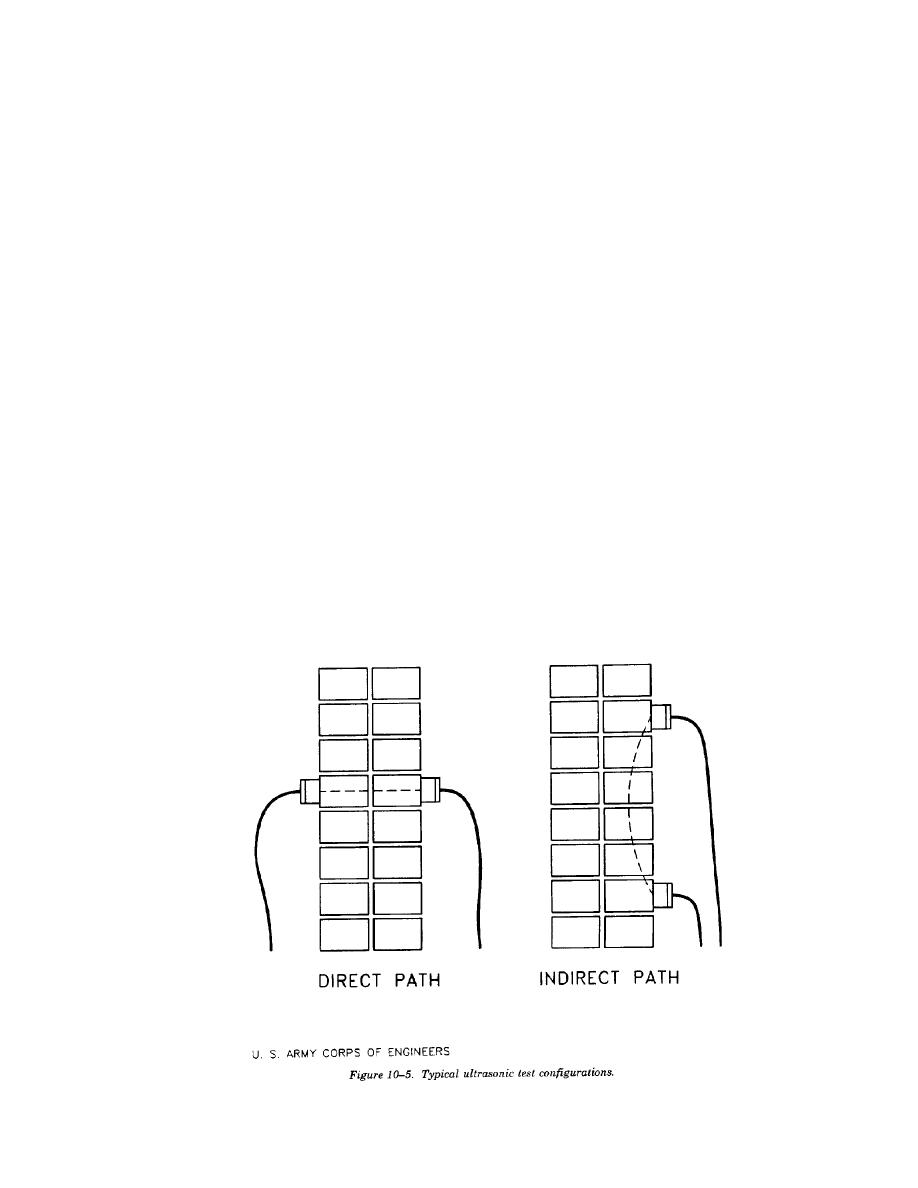
TM 5-809-3/NAVFAC DM-2.9/AFM 88-3, Chap. 3
have been shown to influence ultrasonic measure-
through-wall) tests in which the sending and
ments in concrete; including, among others; aggre-
receiving transducers are placed in line with one
gate type and size, moisture content, and the
another on opposite sides of the test wall; and (b)
presence of reinforcement. Generally, those factors
Indirect tests in which the transducers are located
which can affect compressive strength may also
on the same face of the wall in a vertical or
affect ultrasonic pulse velocity, though not neces-
horizontal line. These test configurations are
sarily in direct proportion. Strength predictions can
illustrated in figure 10-5. The simplest way to
only be justified if a calibration of pulse velocity
utilize ultrasonic wave transmission data is to
with masonry strength is made for the specific
simply record the arrival time and the pathlength
structure under consideration, and then only if the
and calculate an average velocity for the pulse. The
conditions of testing can be carefully controlled.
determination of arrival time is simplified by the use
The empirical relationship between ultrasonic pulse
of a digital readout on the device. If the digital
velocity and masonry compressive strength must, in
readout is not used, it is possible to analyze the
effect, be established for every structure evaluated.
wave trace to determine the arrival time. Data may
Because of this limitation, the pulse velocity
then be displayed in any of several forms including
method is generally used only to measure material
x-y plots of pulse path length versus pulse travel
uniformity over a large area of a structure.
time, contour maps of arrival time, or contour maps
(2) Equipment. Equipment needed for
of pulse transmission quality.
(4) Indirect tests. Indirect tests are useful
ultrasonic investigations consists of two
transducers (transmitter and receiver), transducer
for determining the average velocity through a
leads, and a power unit with digital transit time
single outer wythe of masonry, and for locating
display. A transient wave recorder can also be
flaws in the outer wythes. A distinct flaw, such as
useful to provide hard copy records of the signals.
a delaminated bed joint, will cause a reduction in
These records can then be fed into a portable
the pulse velocity in the vicinity of the flaw. Hence,
computer for more sophisticated analysis of the
an area of lesser quality material can be expected to
signals.
have a slower pulse velocity. Clay brick masonry,
(3) Experimental procedure. Two types of
if built with weak mortar and low strength units,
tests are typically conducted: (a) Direct (or
may attenuate the high frequency stress wave to the
10-7


 Previous Page
Previous Page
